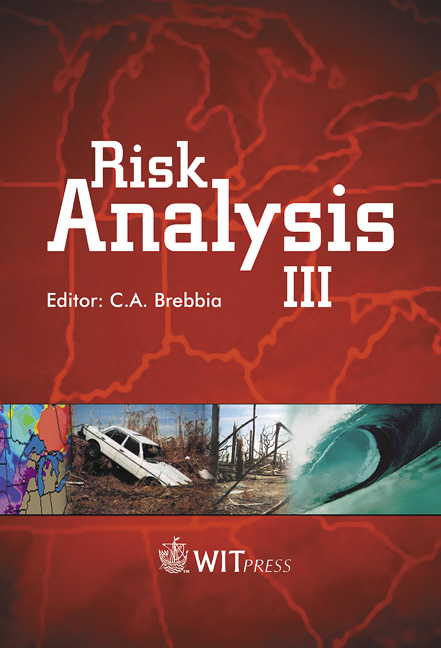Environmental Impact And Risk Assessment Of A Zircon Mineral Plant Emissions
Price
Free (open access)
Transaction
Volume
31
Pages
Published
2002
Size
644 kb
Paper DOI
10.2495/RISK020451
Copyright
WIT Press
Author(s)
S. Righi, C. Simonetto, L. Bruzzi, M. Andretta & R. Serra
Abstract
Environmental impact and risk assessment of a zircon mineral plant emissions S. Righi1, C. Simonetto1, L. Bruzzi1, M. Andretta2 & R. Serra2 1 Bologna University, Italy 2 Montecatini Environmental Research Center, Montedison Group, Italy Abstract In this paper we present a study of the effects of particulate emissions of a zircon mineral processing plant on the air quality of an industrial area. It is well known that zircon minerals contain significant levels of natural radioisotopes (500/1000 Bq/kg for 232Th and 1000/5000 Bq/kg for 238U). For this reason, the industrial processes of these minerals require specific impact analysis of the health effects and potential risk for people living near by the plant. The case study we analysed is located in an industrial area in the North-East part of Italy. The plant mills zircon sands reducing them to a size lower than 5 pm, for foundry or ceramic industrial uses. Sands come from Australia, South Africa and Ukraine and their natural radioactivity is in the range of 1800/3200 Bq/kg for 238U.The presence of many other industrial plants in the area of concern requires particular attention in evaluating the environmental effects of this kind of mill process, as a consequence of new European and National legislation (Directive 29/96/EURATOM [1], Italian Legislative Decree n. 241/2000 [2]), too. The analysis we describe in this paper has been performed using gaussian models to simulate the dispersion and deposition of radioactive particulate on the neighbour sites. The results of the simulation models have been used as guidelines for a monitoring sampling campaign to verify the long term effects of the mill process. The radioactivity concentration has been determined by gamma-ray spectrometry using HPGe detector connected to a multi-channels analyser. The simulation models results have been used to make a risk evaluation of the effective absorbed dose, too.
Keywords





